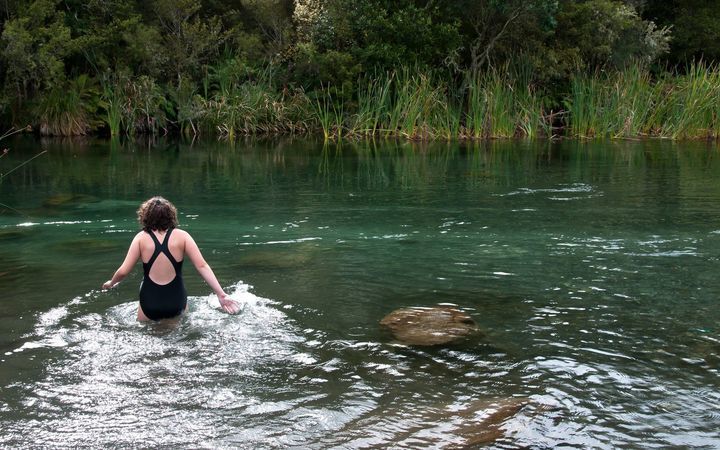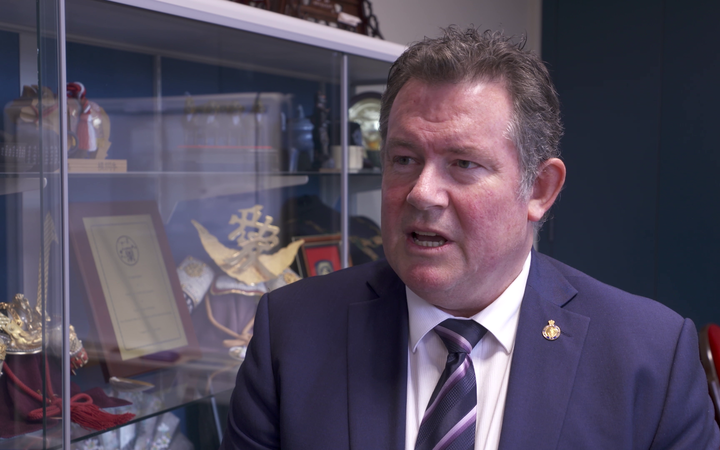There have been at least 25 water-related and suspected drownings since the start of December, including three yesterday.
 File photo Photo: 123rf
File photo Photo: 123rf
Four drownings in the same section of the Manawatū River this past week have also prompted a push for better water safety education.
Ahimate Reserve, in Palmerston North, used to be a popular place for people to swim but signage now warned people away from the water.
A rāhui, which restricts the use of an area, was put in place after 11- year-old Blae Ler Paw and 25-year-old Mu Mu went missing on Wednesday, 29 December 2021.
Two other men drowned on Sunday.
Palmerston North City mayor Grant Smith said the four deaths were a “tragedy” and he was also disappointed some people were still choosing going for a dip there, given the rāhui and amount of media coverage.
“Sometimes you just can’t stop people’s habits.”
Smith thought there probably should be more education about what a rāhui was but he also wanted to see water safety education strengthened.
He said the drownings had “brought home that rivers are really dangerous and as a nation we’ve been quite focused on water safety on beaches”.
 Palmerston North City mayor Grant Smith wants water safety strengthened. Photo: RNZ / Samuel Rillstone
Palmerston North City mayor Grant Smith wants water safety strengthened. Photo: RNZ / Samuel Rillstone
Water Safety New Zealand spokesperson Rob Hewitt agreed on both points and said people needed to be prepared for wherever they were swimming.
He said people needed to recognise rivers and the sea behaved differently, be watching out for how rivers were moving, and ideally had a floatation device with them.
Particularly for weak swimmers, he highlighted how it was naturally harder to stay afloat in a freshwater river because it did not have a salt concentration of the sea.
Water Safety New Zealand’s chief executive Daniel Gerrard told Morning Report there may have been too much focus on beaches, rather than rivers and lakes.
Staff will discuss introducing a new education campaign in schools.
“We need to focus on our rivers and lakes a lot more and perhaps we have been focusing too much on the beaches, I think a robust education campaign starting with the youngsters in school is something we’ll be discussing,” he said.
Gerrard said he hoped he could work with the Ministry of Education to provide more experiential water safety opportunities for kids within the school curriculum.
“It’s not just about learning to swim, it’s swimming to survive, it’s knowing how to float, it’s understanding the difference between river currents and rips at the beach… so yeah I think there’s a lot more we all can be doing.”
He said swimming in rivers can be particularly dangerous as conditions in the surrounding environment can quickly alter the state of the river.
“Rivers can look really inviting, they look calm they don’t have the daunting big waves but we know a lot of water can move through some of these bigger rivers and things can change really really quickly… it can go from centimetres to metres in a very small distance and you can be over your head very quickly,” Gerrard said.
Funeral for two victims being planned
The funeral for Blae Ler Paw and Mu Mu, who were both refugees from Burma and part of the Karen refugee community, is set to take place on Thursday.
New Zealand Karen Association chairperson Eh Doh Soe said they had little swimming experience.
A Givealittle page has been set up – raising more than $44,000 towards funeral costs.
Soe said they were trying to take as much weight of the families’ shoulders as they could.
“We tried to focus on their health and their wellbeing instead of focusing on the financial hardship of [funeral costs],” he said.
Soe said there would be one funeral for the pair, who were close family friends, and it was intended they would be buried near each other.
He said the families had discussed putting any remaining donations towards educating the Karen community about water safety.
“They want to give back to the community and prevent this to happen again in the future.”
In total, there had been at least 25 water-related and suspected drownings since the start of December, 2021: 20 of them were in December, which was more than double the number of drowning deaths from December 2020 and up from just five during December 2018.
The latest was a 28-year-old man who died while swimming in the Waingaro River, Waikato, yesterday afternoon. A child drowned at Kai Iwi Lakes in Northland and a person died after getting into difficulty at Wenderholm Regional Park, north of Auckland.
